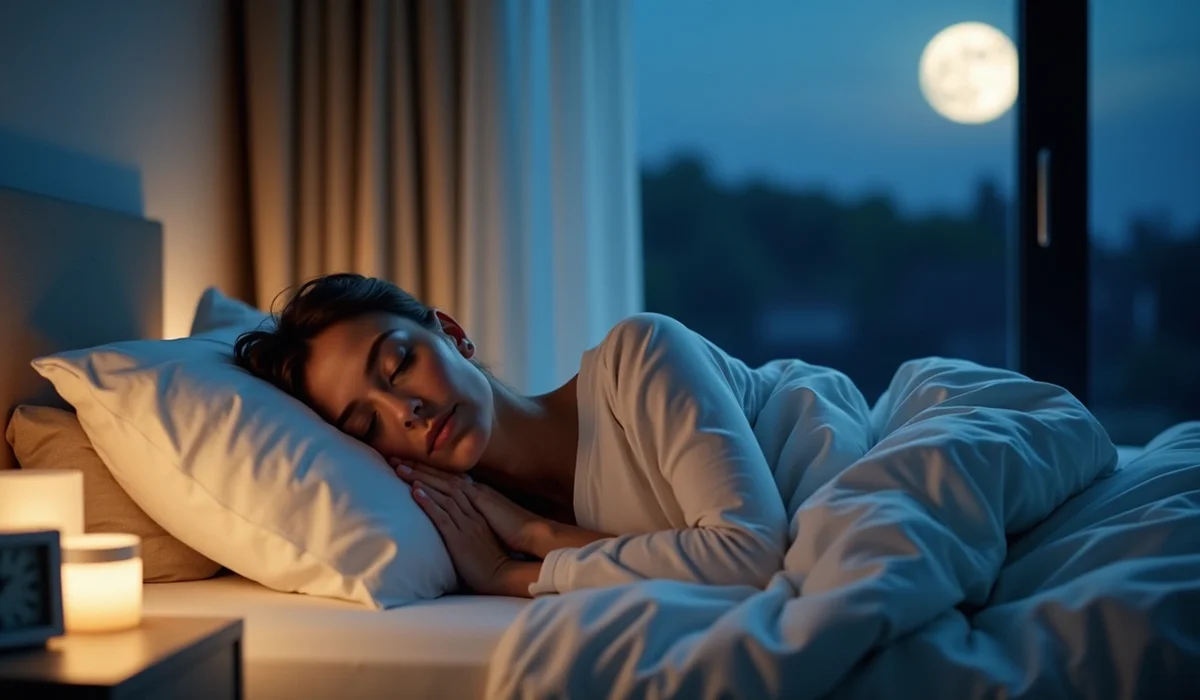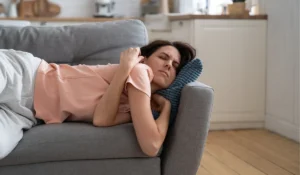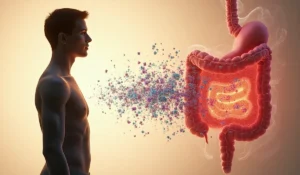Sleep problems keeping you up at night? BHRT could be the solution you need to get better rest. Your hormones can disrupt sleep patterns when they’re out of balance, which leaves you tired and frustrated. Many people sleep better after they start bioidentical hormone replacement therapy.
BHRT stands for bioidentical hormone replacement therapy, which uses hormones that match the ones your body produces naturally. This treatment has helped people with fatigue, mood swings, and other symptoms during hormonal changes for 30 years. The progesterone in BHRT therapy helps improve your sleep quality and plays a vital part in your overall health. The benefits of BHRT are impressive, but you should know about its potential risks before starting treatment.
This piece looks at how unbalanced hormones – especially cortisol, melatonin, estrogen, and progesterone – can affect your sleep cycle. You’ll also learn how BHRT can help adjust these hormones to turn your restless nights into peaceful ones. If other solutions haven’t worked, understanding BHRT therapy might help you get the deep, refreshing sleep your body needs.
What is BHRT and how does it work?
Bioidentical hormone replacement therapy (BHRT) helps people who have hormone imbalances that affect their sleep and wellbeing. A better understanding of these treatments will help you make smart choices about managing your symptoms.
Definition of BHRT and how it is different from HRT
BHRT uses hormones that match the chemical and structural makeup of hormones your body produces naturally. The Endocrine Society states that bioidentical hormones are “compounds that have exactly the same chemical and molecular structure as hormones that are produced in the human body”. Traditional hormone replacement therapies (HRT) use synthetic hormones, but BHRT wants to match your body’s natural hormones exactly.
BHRT and traditional HRT both treat hormone imbalances. The biggest difference lies in their molecular structure. BHRT exactly matches your body’s hormones, which should allow your hormone receptors to use them just like your natural hormones.
Plant-based origin and chemical structure
Marketing often promotes these hormones as “natural,” but bioidentical hormones need extensive processing. Soy or yams serve as the starting point for most bioidentical hormones. Plants can’t produce human hormones directly, so these raw materials need chemical changes.
Medical experts explain that “Plants produce related chemicals known as plant sterols that can be converted chemically through laboratory-based enzymatic processing into steroid hormone products”. The final chemical structure after processing makes a hormone “bioidentical,” not its source.
FDA-approved vs compounded BHRT
Bioidentical hormones come in two main types: FDA-approved products and custom-compounded formulations. FDA-approved bioidentical hormones go through extensive testing to ensure they work safely and provide consistent doses. These products include various estradiol and progesterone options available as pills, patches, sprays, creams, and gels.
Custom-mixed bioidentical hormones from specialty pharmacies provide another option based on doctor prescriptions. This customization might sound appealing, but these mixtures lack FDA oversight for dose, purity, and safety. Studies show quality and dosage problems in compounded formulations.
The North American Menopause Society suggests using compounded hormone therapy only if patients are allergic to FDA-approved products. Scientific evidence doesn’t support claims that compounded bioidentical hormones are safer or work better than FDA-approved options.
The science of sleep and hormones
The complex relationship between hormones and sleep explains why many people have trouble sleeping during hormonal changes. BHRT therapy can improve sleep quality by a lot if you have hormone-related insomnia.
Role of estrogen and progesterone in sleep regulation
Hormone levels affect sleep patterns throughout the menstrual cycle. Women get more slow wave sleep during the luteal phase because progesterone promotes better sleep.
Your body uses progesterone as a natural sedative. This “relaxing hormone” rises during the luteal phase to enhance deep sleep and promote sleep spindles (brain waves that help restore your body). Sleep quality often declines when progesterone levels fall before menstruation.
Estrogen plays a more complicated role in sleep. Poor sleep efficiency and frequent movement associate with low estradiol levels. Studies show that sudden changes in estrogen, rather than the actual levels, can trigger sleep problems.
How cortisol and melatonin affect sleep cycles
Cortisol and melatonin work together but in opposite ways to control your sleep-wake cycle. Your body releases melatonin after sunset. It peaks between 2-4 a.m. and slowly decreases as morning approaches. Melatonin stays low during daylight hours.
Cortisol does the opposite – it peaks early in the morning (around 8 a.m.) and decreases throughout the day and early sleep. This pattern helps your body prepare for daily activities and nighttime rest.
These hormones create a predictable rhythm when they work properly. Melatonin synchronizes central and peripheral tissues while cortisol prepares you for wakefulness.
Why hormonal imbalance disrupts rest
Unbalanced hormones can affect your sleep deeply. Chronodisruption—when your body’s rhythms stay disrupted for long periods—results in poor sleep quality.
Night-time cortisol spikes, artificial light suppressing melatonin, and changing reproductive hormones during perimenopause can all disrupt sleep. BHRT often helps people sleep better by stabilizing their hormone levels.
How BHRT therapy improves sleep quality
BHRT provides targeted relief if you have sleep problems by addressing the underlying hormonal causes. Most patients notice better sleep within just 3-6 weeks after starting treatment.
Restoring estrogen and progesterone balance
BHRT boosts declining estrogen levels to support REM sleep and regulate body temperature. Progesterone, known as the “relaxing hormone,” creates natural sedative effects through its interaction with brain receptors. These two hormones work together to rebuild healthy sleep patterns that menopause or aging previously disrupted.
Reducing night sweats and hot flashes
Research shows BHRT eases hot flashes in up to 90% of menopausal women. This reduction in disruptive episodes helps prevent frequent nighttime wake-ups. Patients experience fewer sleep interruptions from uncomfortable temperature changes that break up their rest.
Improving REM and deep sleep phases
BHRT strengthens sleep cycles and improves deep REM sleep specifically. This vital sleep phase helps memory retention, emotional processing, and learning. Patients fall asleep faster and wake up less during the night.
Stabilizing cortisol for better circadian rhythm
Balanced cortisol release works with melatonin to maintain your body’s internal clock. BHRT helps normalize this relationship and creates predictable sleep-wake patterns. Your body receives clear signals about sleep and wake times through this hormonal rebalancing.
Is BHRT safe? What you need to know
Understanding BHRT’s safety profile is vital if you want to improve your sleep. The promising benefits come with risks that need careful evaluation, regulatory oversight, and individual-specific approaches.
BHRT side effects and safety concerns
BHRT users might experience weight gain, blurred vision, tiredness, acne, increased facial hair, headaches, breast tenderness, spotting, cramping, bloating, and mood swings. Your body usually adjusts to new hormone levels over time. The risks become more serious as BHRT might increase your chances of blood clots, stroke, and gallbladder disease. Heart disease and breast cancer risks could rise, particularly with long-term use or among older patients.
Compounded vs FDA-approved: what’s the difference?
FDA-approved bioidentical hormones must pass strict safety testing and quality control measures. Compounded bioidentical hormones lack this FDA oversight in safety, quality, and purity. Lab tests show that hormone levels in compounded products vary widely—ranging from 26% below to 31% above the labeled amounts. The North American Menopause Society suggests compounded hormone therapy only to patients with allergies to FDA-approved products.
Monitoring and dosage personalization
BHRT treatment requires consistent monitoring. Most patients (70-80%) need few dosage adjustments, while 20-30% require frequent modifications to achieve the best results. Some doctors ask for salivary hormone testing to make dosing decisions, but the FDA warns against this approach. These tests capture hormone levels at one specific moment, which fluctuate throughout the day.
What studies say about long-term use
Long-term BHRT safety data remains scarce. A newer study, published by Medicare focusing on senior women, found that estrogen monotherapy reduced mortality (19%), breast cancer (16%), and several cardiovascular conditions. The data on compounded bioidentical hormones proves insufficient to evaluate long-term risks of breast cancer, endometrial cancer, or cardiovascular disease.
Conclusion
Poor sleep from hormonal imbalances can hurt your quality of life by a lot. BHRT gives hope to people who tried other sleep remedies without success. This piece shows how BHRT helps balance the key hormones that control your sleep cycles.
Your hormones need to work together for good sleep. BHRT targets and fixes estrogen and progesterone levels. This helps reduce night sweats and hot flashes that mess up your sleep. On top of that, it helps normalize cortisol patterns. Your body can then keep a healthy circadian rhythm that’s vital for regular sleep-wake cycles.
Safety should be a top priority in your decision. FDA-approved BHRT options come with standard doses and proven safety records. Compounded formulations let you customize but don’t have the same oversight. You should talk to your healthcare provider about both options before starting any treatment.
Your specific needs and symptoms will show if BHRT might help your sleep issues. Many patients see clear improvements within weeks of starting treatment, especially when dealing with fewer nighttime wake-ups and better deep sleep. Side effects can happen but usually fade as your body gets used to the treatment.
Good sleep is the foundation of feeling well. Hormone imbalances can wreck this vital function. BHRT might give your body the balance it needs. Instead of dealing with more sleepless nights, talk to a qualified healthcare provider. Hormone testing could show if BHRT might help you get the restful sleep your body needs.





